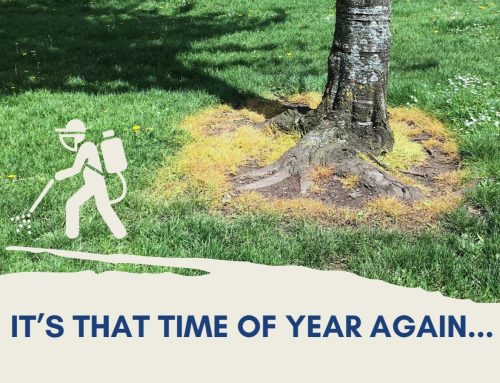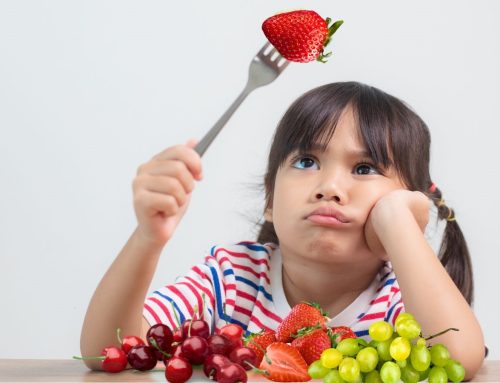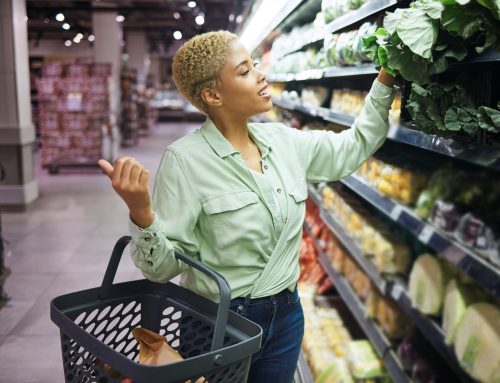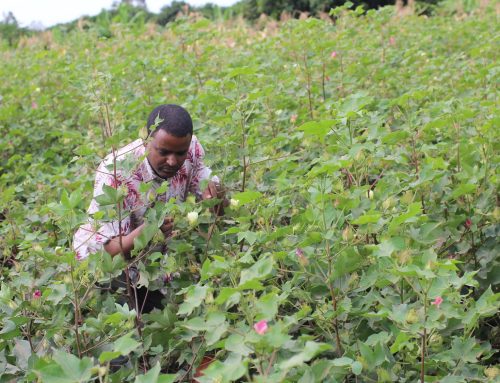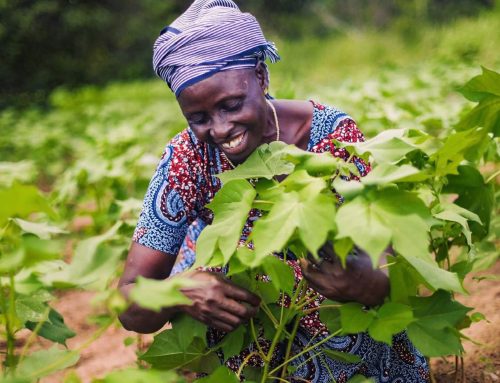by Joan Lanfranco, Heinrich-Böll-Stiftung
While tension is rising amongst EU Member States on new pesticide reduction targets, the recently launched Pesticide Atlas by Heinrich-Böll-Stiftung, Friends of the Earth Europe and Pesticide Action Network Europe, shows that the amount of pesticides used worldwide has increased by 80% since 1990, causing harm to the health of farmers, consumers and nature alike.
The Atlas is a comprehensive overview of data on toxic chemicals used in agriculture, their impact on biodiversity, the climate, people and planet’s health, and alternative solutions for more sustainable food and farming systems. It finds that the global pesticide market has almost doubled in the last 20 years. By 2023, the total value of pesticide use is expected to reach nearly 130.7 billion US dollars.
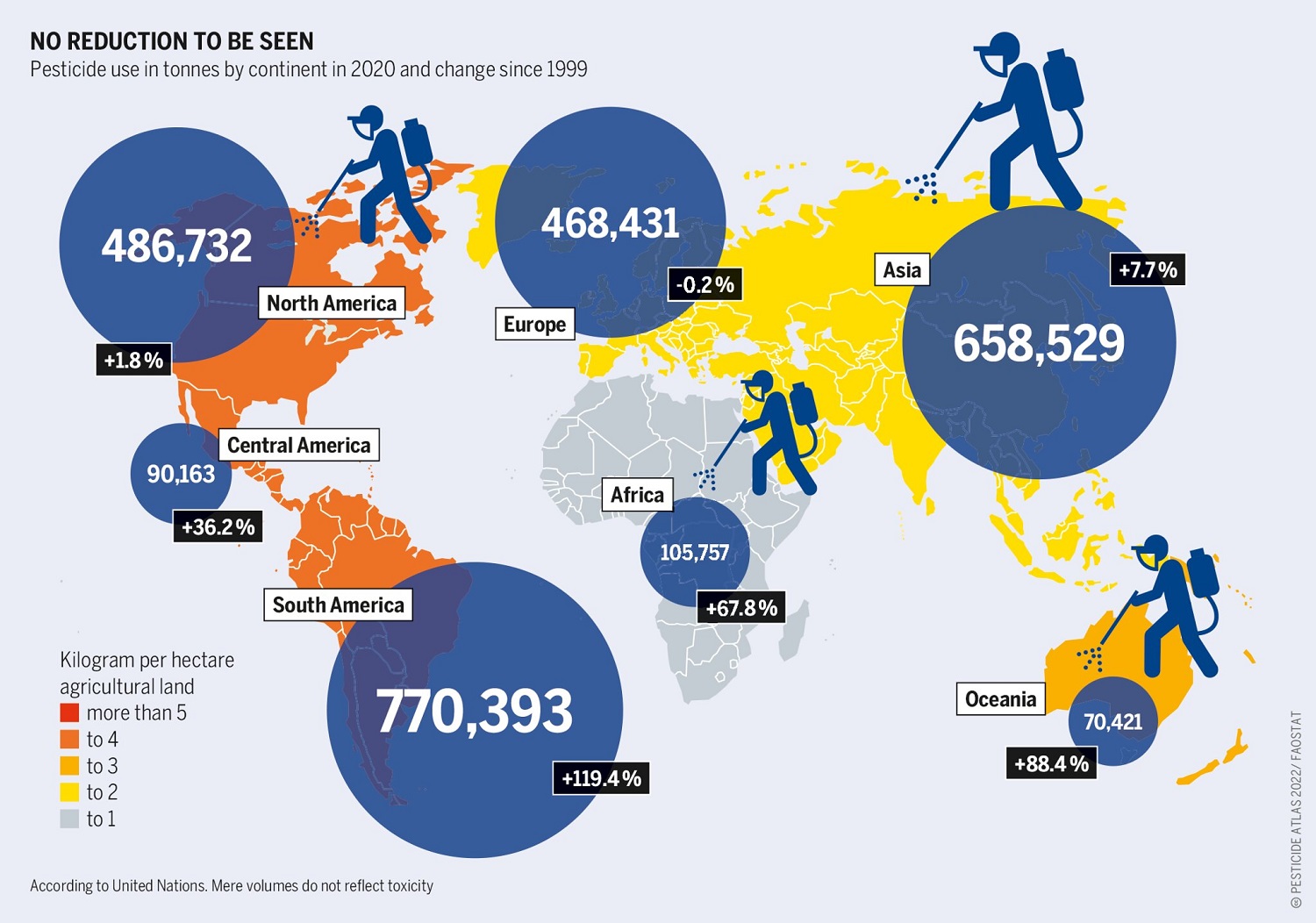
Pesticide use in tonnes by continent in 2020 and changes since 1999. Credit Heinrich-Böll-Stiftung Europe.
Almost a quarter of all pesticides are sold in the EU, making it the world’s biggest market. The EU is also the top exporting region, increasingly selling to countries in the Global South where pesticides banned for use in the EU can be exported. In 2018, European agrochemical companies planned to export 81,000 tonnes of pesticides prohibited for use on their own fields.
Demand coming from the EU, especially to feed livestock, has also contributed to a dramatic increase in pesticide use in biodiversity rich countries like Brazil, Argentina and Paraguay, particularly since the large-scale introduction of genetically modified, pesticide-resistant soy. This exemplifies the need for dietary changes and different biofuel policies.
The growing amount of pesticides used globally has led to a rise in pesticide poisoning, especially in the Global South where farmworkers are often not sufficiently protected. According to conservative calculations, there are around 255 million poisoning accidents in Asia, just over 100 million in Africa and around 1.6 million in Europe. The multibillion-dollar market is divided between a very small number of corporations in the Global North. The top four firms (Syngenta Group, Bayer, Corteva and BASF) control around 70% of the global pesticide market.
The Atlas shows that conventionally managed fields have five times lower plant species richness and about twenty times lower pollinator species richness compared to organic fields. Pesticide active ingredients usually do not stay in the place where they are applied. They seep into the soil and groundwater, become airborne, or blow away – some can even be found over 1,000 kilometres away. Contrary to corporations’ promises, the cultivation of genetically modified plants has increased the use of pesticides like glyphosate and the growth of resistant weed species.
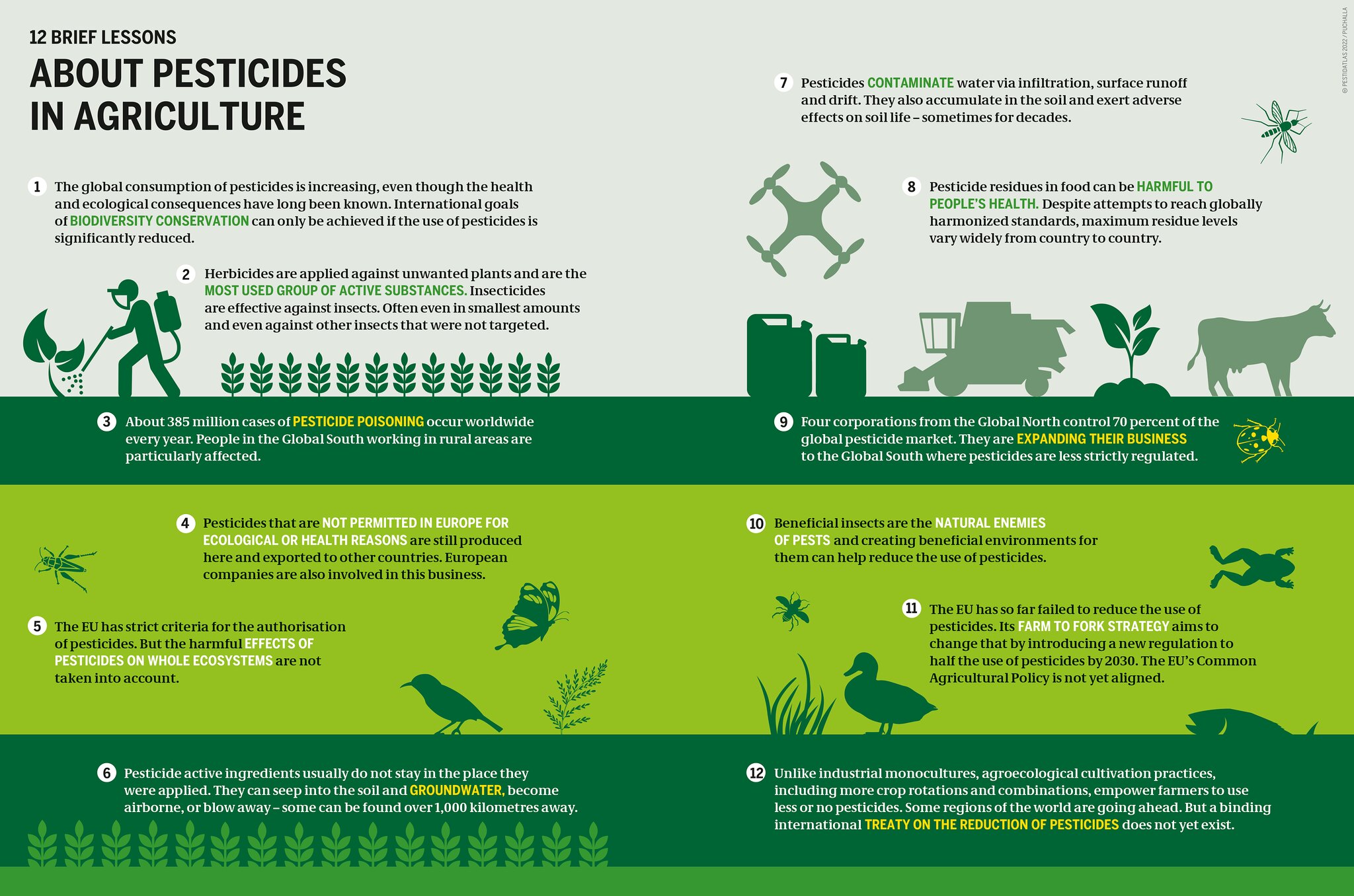
12 Brief lessons about pesticides in agriculture. Credit Heinrich-Böll-Stiftung Europe.
In EU countries, legislation has so far failed to lead to a reduction in the use of pesticides despite scientific evidence demonstrating the urgent need to do so. The Farm-to-Fork Strategy aims to transition away from agricultural systems heavily dependent on agrochemicals, but the EU’s Common Agriculture Policy must be aligned.
The Atlas backs agroecology as a pathway for the necessary transition towards sustainable food systems. Working together with nature can result in greater biodiversity, improved soil health and in the end more resilience to pests, diseases and changing climatic conditions. As a first step, the EU has to make sure that farmers implement Integrated Pest Management methods, with synthetic pesticides being used only as a very last resort.
The EU must set the direction towards a pesticide-free Europe, supporting farmers in their transition towards agroecology and rejecting false promises like new GMOs and the overemphasis on precision farming. Better indicators to measure pesticide reduction are needed. The current indicator proposed in the new EU Pesticide Regulation is counterproductive and without improving this indicator, the whole regulation will be seriously undermined.
 Joan Lanfranco is Head of Communications and Outreach at the European Union office of the Heinrich-Böll-Stiftung, the German Green political foundation.
Joan Lanfranco is Head of Communications and Outreach at the European Union office of the Heinrich-Böll-Stiftung, the German Green political foundation.
Download the Pesticide Atlas here.

